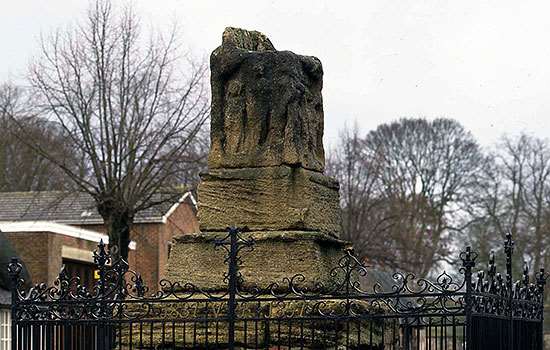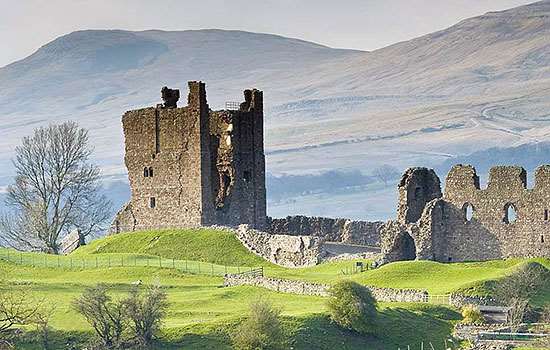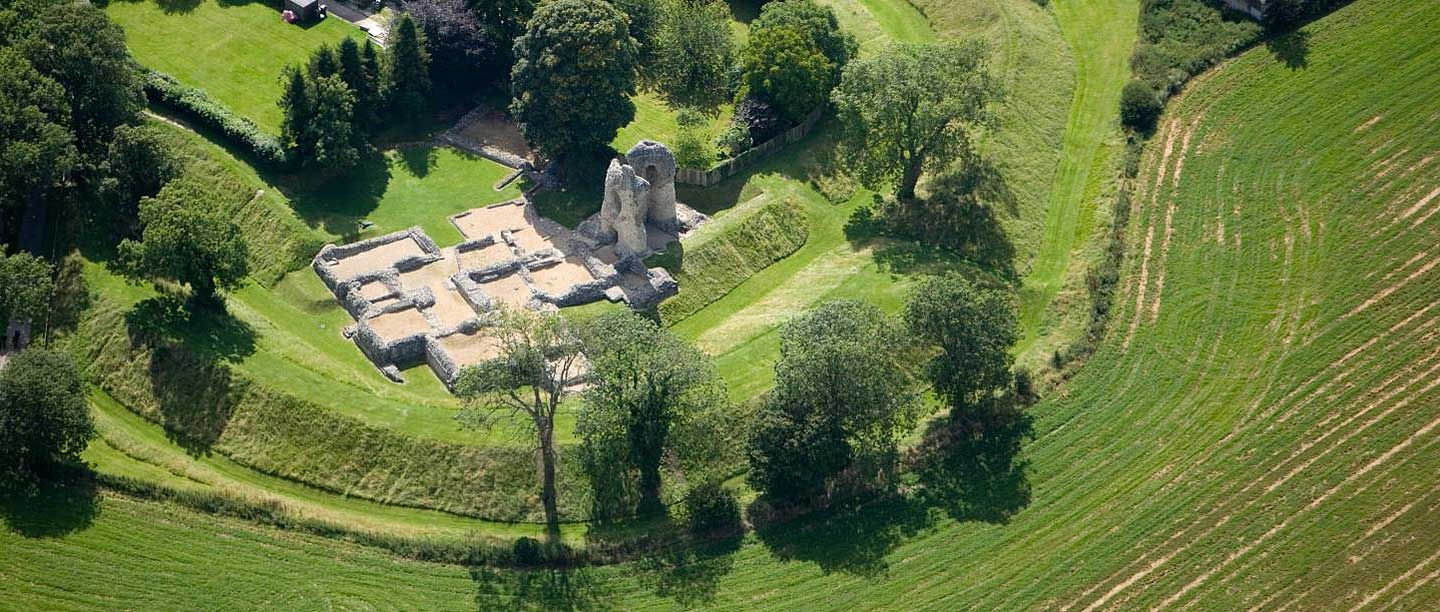The first castle
The 11th-century castle was set within two adjacent enclosures, surrounded by earthwork banks and ditches. Fieldwork has established that more than 1,000 years before a castle was built the southern enclosure may originally have been a small Iron Age fort.
After the castle became royal property in about 1100 it was managed by John the Marshal (d.1165) who was the ‘castellan’, or custodian, on behalf of the king. He fortified the castle, probably adding the enclosure to the north, which contained the most important buildings, largely constructed in stone. The southern enclosure, or bailey, had timber buildings including the castle farm, stables and kitchens.
In 1210 King John (r.1199–1216) repaired and improved the castle, bringing the buildings up to date as a residence, to take advantage of the nearby hunting forests.
A hunting retreat
Henry III (r.1216–72), who inherited the castle from his father, King John, was evidently fond of Ludgershall. He visited at least 21 times, and made many additions and improvements to the castle between 1234 and 1251, transforming it into a lavish residence.
The main features of Henry’s building works were a new great hall for dining and entertaining, built in 1244, and royal apartments.
There were two separate parks at Ludgershall. The long, narrow northern park was probably laid out in about 1100 and seems to have been located in such a way as to allow activities in the park to be watched from the castle buildings and earthworks. It gave the impression of an enormous park extending beyond the horizon; in fact it was too small for hunting, but could have staged hare and rabbit coursing, or tournaments.
The south park was a separate hunting area on the other side of Ludgershall town, and was probably kept well stocked with deer.
The king’s manor
From about 1317 Ludgershall was referred to as ‘the king’s manor’, and was given to successive queens and royal dependants, including Queen Philippa (d.1369), wife of Edward III, and her daughter Isabel, Countess of Bedford (d.1379).
We do not know when the royal family stopped using the castle, but it was visited less and less frequently in the 14th and 15th centuries. By the 1540s the buildings had been dismantled and levelled over to form the garden of a nearby house. The tower was kept as a garden feature.
The surviving buildings
Ludgershall Castle was set within two adjacent enclosures, surrounded by earthwork banks and ditches. A modern farm occupies the middle of the castle but the original outline of the two enclosures can still be seen. The northern enclosure was inserted or superimposed onto an earlier, southern enclosure, the banks of which are now much altered and quarried.
Throughout the castle’s history, many of its buildings were made of timber taken from the nearby hunting forest of Savernake. Only those rebuilt in stone survive today, and they have been robbed of their original facings, leaving a flint-speckled aspect quite different from their original smooth-fronted appearance. The most prominent survival is the tower, which dates from the late 12th century.
The foundations of the adjacent buildings visible today within the northern enclosure, which were excavated in the 1960s and 1970s, are those of Henry III’s building campaign of the 13th century. They include his great hall, built in 1244, and the castle’s royal apartments,. These contained the king’s and queen’s chambers, and at least two chapels. In 1251 Henry built a new great chamber for his son Edward, ‘with two fireplaces and two privy chambers’.
Along the north-east section of the northern enclosure’s outer bank – the sector occupied by the royal residential apartments – there is a wide, level platform or terraced walk overlooking the park.
Research and Excavation
Excavated between 1964 and 1972, the castle has been extremely well researched in terms of excavations, documentary research and an earthwork survey. The excavations revealed the development of various defensive and residential buildings, in both timber and stone, between the 11th and 13th centuries.
Further reading
Brown, RA, Colvin, HM and Taylor, AJ, The History of the King’s Works, vol 2: The Middle Ages (London, 1963), 729–31
Creighton, O, Castles and Landscapes: Power, Continuity and Fortification in Medieval England (London and New York, 2002)
Crouch, D, William Marshal: Knighthood, War And Chivalry, 1147–1219, 2nd edn (London, 2002)
Ellis, P (ed), Ludgershall Castle, Wiltshire: A Report on the Excavations by Peter Addyman, 1964–72, Wiltshire Archaeological and Natural History Society Monograph 2 (Devizes, 2000)
McOmish, D, Field, D and Brown, G, The Field Archaeology of the Salisbury Plain Training Area (English Heritage, Swindon, 2002), 131–4
Stevenson, JH, ‘The castles of Marlborough and Ludgershall in the Middle Ages’, Wiltshire Archaeological and Natural History Magazine, 85 (1992), 70–79
Stevenson, JH, ‘Ludgershall’, in The Victoria History of the Counties of England: A History of Wiltshire, vol 15, ed DA Crowley (1995), 119–33 (accessed 21 May 2018)
Wheeler, R, ‘Ludgershall Castle building survey’, Oxford Archaeological Unit, unpublished research paper produced for English Heritage (2004)
Related content
-

History of Ludgershall Cross
Read a history and description of the 14th-century cross that stands in the centre of the nearby village.
-

English medieval castles
Discover the stories held within the walls of England’s greatest fortifications and learn about the rise and fall of the medieval castle.
-

More histories
Delve into our history pages to discover more about our sites, how they have changed over time, and who made them what they are today.
